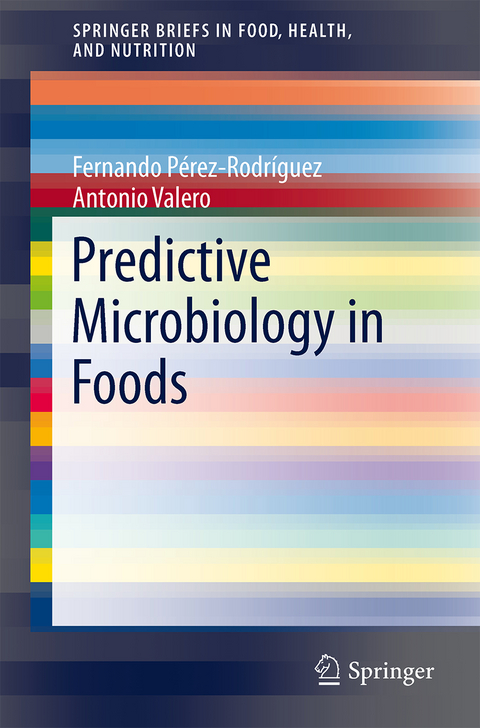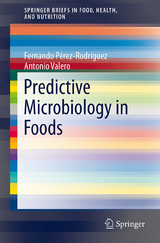Predictive Microbiology in Foods
Seiten
2012
Springer-Verlag New York Inc.
978-1-4614-5519-6 (ISBN)
Springer-Verlag New York Inc.
978-1-4614-5519-6 (ISBN)
Predictive microbiology is a recent area within food microbiology, which studies the responses of microorganisms in foods to environmental factors (e.g., temperature, pH) through mathematical functions. The main goal of predictive models in food science is to assure both food safety and food quality.
Predictive microbiology is a recent area within food microbiology, which studies the responses of microorganisms in foods to environmental factors (e.g., temperature, pH) through mathematical functions. These functions enable scientists to predict the behavior of pathogens and spoilage microorganisms under different combinations of factors. The main goal of predictive models in food science is to assure both food safety and food quality. Predictive models in foods have developed significantly in the last 20 years due to the emergence of powerful computational resources and sophisticated statistical packages. This book presents the concepts, models, most significant advances, and future trends in predictive microbiology. It will discuss the history and basic concepts of predictive microbiology. The most frequently used models will be explained, and the most significant software and databases (e.g., Combase, Sym’Previus) will be reviewed. Quantitative Risk Assessment, which uses predictive modeling to account for the transmission of foodborne pathogens across the food chain, will also be covered.
Predictive microbiology is a recent area within food microbiology, which studies the responses of microorganisms in foods to environmental factors (e.g., temperature, pH) through mathematical functions. These functions enable scientists to predict the behavior of pathogens and spoilage microorganisms under different combinations of factors. The main goal of predictive models in food science is to assure both food safety and food quality. Predictive models in foods have developed significantly in the last 20 years due to the emergence of powerful computational resources and sophisticated statistical packages. This book presents the concepts, models, most significant advances, and future trends in predictive microbiology. It will discuss the history and basic concepts of predictive microbiology. The most frequently used models will be explained, and the most significant software and databases (e.g., Combase, Sym’Previus) will be reviewed. Quantitative Risk Assessment, which uses predictive modeling to account for the transmission of foodborne pathogens across the food chain, will also be covered.
1. Predictive Microbiology in Foods.- 2. Experimental Design and Data Generation.- 3. Predictive Models: Foundation, Types and Development.- 4. Other Models and Modeling Approaches.- 5. Software and Data Bases: Use and Application.- 6. Application of Predictive Models in Quantitative Risk Assessment and Risk Management.- 7. Future Trends and Perspectives.
| Erscheint lt. Verlag | 11.12.2012 |
|---|---|
| Reihe/Serie | SpringerBriefs in Food, Health, and Nutrition ; 5 |
| Zusatzinfo | 11 Illustrations, color; 10 Illustrations, black and white; VI, 128 p. 21 illus., 11 illus. in color. |
| Verlagsort | New York, NY |
| Sprache | englisch |
| Maße | 155 x 235 mm |
| Themenwelt | Naturwissenschaften ► Biologie ► Mikrobiologie / Immunologie |
| Technik ► Lebensmitteltechnologie | |
| Technik ► Umwelttechnik / Biotechnologie | |
| Schlagworte | Foodborne pathogens • model validation • Predictive Modelling • probability model • Quantitative Microbial Risk Assessment • Shelf-life prediction |
| ISBN-10 | 1-4614-5519-7 / 1461455197 |
| ISBN-13 | 978-1-4614-5519-6 / 9781461455196 |
| Zustand | Neuware |
| Haben Sie eine Frage zum Produkt? |
Mehr entdecken
aus dem Bereich
aus dem Bereich
Allgemeine Grundlagen und spezielle Anwendungen
Buch | Softcover (2021)
Springer Berlin (Verlag)
54,99 €




